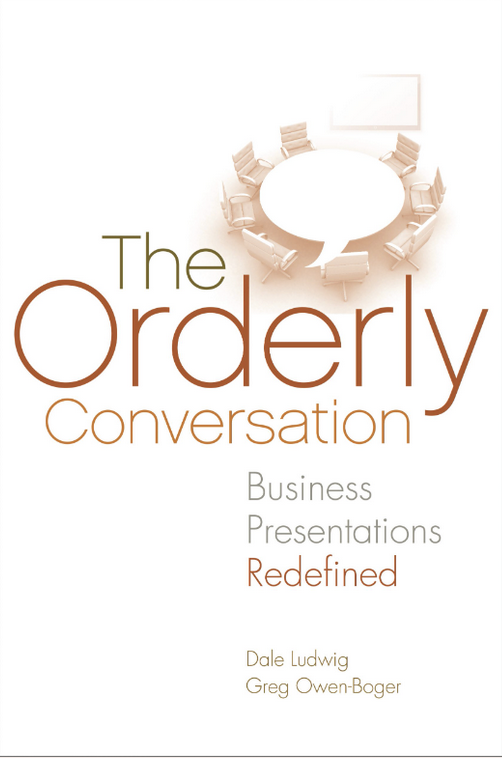
- Dale Ludwig Leadership
Practical Wisdom is One of the Fifteen Facets of Executive Presence
This article is one in a series focusing on Executive Presence and how leaders can meet their potential through improved communication. Executive Presence is defined by Suzanne Bates in her book “All the Leader You Can Be: The Science of Achieving Extraordinary Executive Presence” as “The qualities of a leader that engage, inspire, align, and move people to act… By understanding how your intentions as a leader match up with perceptions, you can learn how to flex your style to gain trust, build alignment, lead change, inspire performance, and drive executional excellence.”
This article focuses on Practical Wisdom, one of the 15 facets that make up a 3-dimensional leader.
Click here to gain a greater understanding of (a) executive presence in general and (b) the other facets that make up a well-rounded leader.
What is Practical Wisdom?
Bates describes Practical Wisdom, one of the fifteen facets of executive presence, as “displaying highly honed qualities of insight and judgement that get to the heart of the issues and produce prudent decisions.” People with a high level of Practical Wisdom are thoughtful, critical thinkers. They learn from the past and apply it to the present. They bring relevant insight to the decision-making process without personal bias.
More than any other facet in the model, Practical Wisdom is accumulated over time. Depending on your career path, your Practical Wisdom could come from a variety of responsibilities at different organizations. Exercising your Practical Wisdom applies what you’ve learned in the past to the situations you face today. The phrase, “the whole is greater than the sum of its parts,” comes to mind.
How Practical Wisdom Makes People Feel
People with a high level of Practical Wisdom possess a deep level of insight into the business. They are also curious and interested in expanding their knowledge through research and the insights of others. As a result, they earn the trust and respect of others. This makes people feel:
- Trust in your decision-making
- Respect for your business savvy
- Comfort because you are interested in my perspective
- Glad that you don’t assume you know everything
- Good about your critical thinking and sound judgment
Not Enough Practical Wisdom
Someone who lacks Practical Wisdom may appear reckless, appearing to make decisions without all of the facts or learning from past mistakes. The effect of this can be that:
- Your reactions appear to be knee-jerk
- People are unsure about how you are making decisions
- People feel left out or irrelevant
- People lose trust in you
- You lack credibility
Specific Behaviors to Improve Perceptions of Practical Wisdom
Here are some things you can do to improve the impression of Practical Wisdom.
- When your experience influences your decisions, let others know what that experience is and why it is relevant to the current situation.
- Be aware of your own biases and ask others if they feel those biases are influencing you too much.
- When facilitating a meeting, work to synthesize information quickly and clearly.
- When necessary, slow down decisions in order to collect more data or research.
- Bring the thoughts and feelings of others into the decision-making process.
- Provide a big-picture perspective and connect dots.
- Stay focused on the needs of the business.
Too Much Practical Wisdom
When someone exhibits too much of a particular facet, it can become an overstrength. An overstrength often results in negative perceptions. Here are some downsides of an overstrength in Practical Wisdom.
- Shutting down discussions that need to take place
- Appearing to be a know-it-all
- Relying too much on your gut instincts
- Ignoring or shutting down the feelings of others during the decision-making process
Since Practical Wisdom is accumulated over time, young leaders with an overstrength in it can be described as reckless or arrogant, especially if they lack applicable experience.
A Story About the Human Aspect of Practical Wisdom
As a trusted subject matter expert (SME), Richard was in charge of developing a new online customer engagement process (OCEP) that included an overhaul of the software interface as well as updates to operational processes. He was excited about the project and had been advocating for the change for years. Finally, he had his chance to bring about real improvements.
In many ways, Richard was perfect for this work. He had decades of experience working with the old process. In recent years, he moved up the management ladder but never forgot what he’d learned about customer needs. In the early stages of development, his team worked quickly and efficiently, completing the first two stages ahead of schedule.
When it was time to roll out the new OCEP to the end users, things got ugly. The end users were comfortable with the old system and felt that the new OCEP was being forced on them unnecessarily. Richard and his team had not consulted the end users during the development phase because they felt it would be a waste of his time and theirs. After all, the team knew what needed to be fixed.
The OCEP training quickly spiraled into complaints and frustration. The learners were angry, and they didn’t hold back. Among their complaints:
- The development team failed to recognize the modern needs of their customer base.
- The additional layer of manager approvals designed to reduce mistakes will create bottlenecks and slow things down.
- The new system tracked data that was no longer useful.
- The development team missed an opportunity to add automation and reduce data entry redundancies.
- They failed to consider how different customers would interact with the user interface.
Richard was at a loss, and the whole thing tumbled out of control.
Richard and the team leaned into their own Practical Wisdom to move the OCEP project forward; however, they failed to recognize the expertise of the end users who have a pulse on their current customer base. Working with less information than they needed led them down the wrong path. Unfortunately, what seemed like a small oversight in their plan became very expensive in the long run. In the end, Richard did not lose his job, but his reputation took a major hit.
Some Facets Ride Together
Often, when we lean into particular facets (or pull back from them), other facets “come along for the ride.” In this case, Richard ignored the facet of Practical Wisdom. He felt that he had a handle on what needed to change and how to do it. When we examine the situation more carefully, we can see that Practical Wisdom isn’t the only facet involved. His lack of Humility and Inclusiveness, coupled with his strength in Confidence and Assertiveness, caused real problems for himself, his colleagues, and the business. Had he only recognized this sooner, he could have avoided the whole mess.
Final Thoughts About Practical Wisdom
Practical Wisdom is in the Substance dimension in the Bates model, which means that it is a facet cultivated over your career that helps build credibility and is relevant to your social role as a leader. These facets include the knowledge and wisdom you have developed, your ability to synthesize information and apply it to the here and now, as well as your ability to connect with and respond to the people you lead.
If you’d like to learn more or explore executive presence coaching options for yourself or your team, click here to schedule a call.

